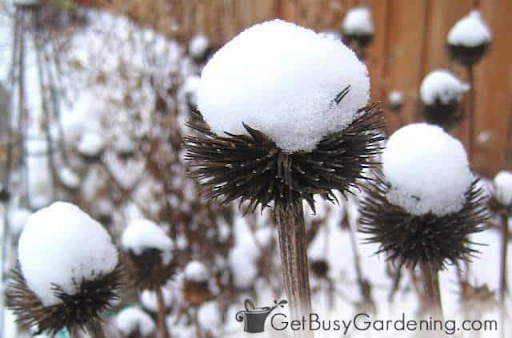Winter Interest With Earth in Mind
By Georgia Elgar
Our Yards and Gardens Matter. The midwinter freeze is upon us and the garden stewards here at Distinctive Gardening, Inc. have been using this time to take stock of our true role as gardeners. Those of us in the landscaping industry have an important role to play in creating human outdoor spaces that work with and mimic the nonhuman world. We carry enormous potential to be leaders in counteracting the entire array of global environmental crises: species biodiversity loss due to climate change, habitat loss due to development, and pollution of soil and water. This year, we at DG are committing even more deeply to lead the way in transforming our yards and gardens into sustainable ones.
How do we do this? Let’s look at a seasonally fitting example: What happens when we apply permaculture principles to the traditional concept of “Winter Interest”?
Ecological gardening need not be merely an ethical choice. It can be a positively aesthetic one! Often the best approach to gardening for nature is also the more beautiful and less laborious one.
Allow Grasses to Stand. At DG, we leave hardy perennial grasses up all winter long whenever possible to provide gorgeous windswept architecture to the landscape. Plus it’s one less fall clean-up chore! Even better, natives like Indian Grass (Sorghastrum nutans L.) can be used with pollinator-friendly wildflowers for a meadow look in summer and have a giant tolerance for poor soils often found in residential landscapes. Perennial grasses also serve to control wind and water erosion and provide excellent wildlife winter habitat and forage for deer and protection for insects and animals. http://www.nativegrasses .com/info/indiangrass.html
Perennial Color Too! Leaving the remains of garden staples like hydrangeas or natives like purple cornflower, beebalm, and sedums add a whimsical appeal to any winter garden! https://getbusygardening.com/winter-interest-plants/
Plant Winter Eye Candy. Many New England natives offer color and festivity in an otherwise white-brown winter schematic. The classics are lovely; winterberry and holly remain forever beloved, but less common choices like Yellow-Twig Dogwood (Cornus sericea) and Staghorn sumac (Rhus typhina) can be the native X-factor in your winter garden. Even better, they both provide especially powerful erosion control and are useful in reclaiming heavily-disturbed sites. Their strikingly colorful twigs, bark, and flower heads also provide winter browsing for deer, elk, moose, rabbits, as well as cover for many bird species. During the warmer months, dogwood is a larval host of the Spring Azure Butterfly and staghorn sumac is important food for many species of moths and butterflies, many of which are in decline.
Red-Twig Dogwood, Cornus sericea | Native Plants PNW; https://www.fs.fed.us/database/feis/plants/tree/rhutyp/all.html ; https://www.nny360.com/artsandlife/staghorn-sumac-a-beneficial-plant/article_6b0300f3-10ed-54c9-9fbe-6edd7f967590.html
Leave the Leaves. Leaf Litter is nature’s blanket! Except for disease-prone roses and fruit trees, leaving leaf litter and perennial remains on your garden beds until spring has countless benefits. It provides protection to beneficial wildlife, insects, and soil microbes. It provides some of next year’s plant nutrition as leaves compost into the soil. It reduces your garden’s reliance on fossil fuels since less clean up means fewer trips to the landfill and fewer hours on the backpack blower!
https://rubyleafdesign.com/tag/ecological-benefits/
Don’t be the last one to catch on to gardening beautifully while benefiting the land instead of harming it. Gone are the days of perfectly manicured beds, invasives, and fall cutbacks of everything in sight. Ecological gardening is here to stay.






